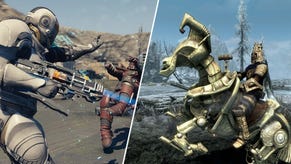“I would do it all over again right now” Creating the cool Fallout fan film that dropped just before Amazon’s TV show
"I've definitely spent roughly over $65,000 of my own money on this, and I know I'll never see any of it back."
“I remember the first three days, everything was so perfect,” Fallout: Deadweight writer and director Nigel Kim tells me. “Everything we got was so perfect that I was having the most fun of my entire life just being there on that set.”
“The last day we kind of hit some production snags, and in the very last 30 minutes of the project,” he continues, “we were rushing, we were trying to get the shot with the stimpak, and it breaks.”
“It drops and shatters into a million pieces in front of me, and, this project, I've been trying to make this happen for like three years now. So, it was just years worth of time and attention and money. Then when this prop broke, it literally shattered my brain for like a split second, where I think I dropped to the ground and my mind was, like, blank for a second. Then Caine - my executive producer - and Eric literally pull me up, throw me in front of a monitor and say, ‘Glue it back together, roll it!’. They kind of slapped me out of my little funk there for a second.”
Despite this minor setback, Deadweight, the fan short Kim and the rest of the crew were working on - which brings to life an extra ending scene for Fallout 4's main story - dropped right at the start of April on YouTube, just a week or so before Amazon’s Fallout TV show arrived. Though, as Kim, production designer Naomi Smith and cinematographer Eric Dickinson tell me, it took a lot of work and planning to get to that point. As all things do, it started out as just an idea.
“Nine years ago, I beat Fallout 4 and I was a little disappointed with the ending,” Kim says, “I didn't feel like the conversation ended with the spouse, because if the game starts with family - with family being taken away from family - I thought that it would have been a better story to bring family back, just to kind of give it any bit of closure in that sense.” Once the credits rolled in his playthrough, Kim found that the idea of bringing the Sole Survivor back to Vault 111, where it all began, stuck with him.
“When I finally got into film, I would talk to all my friends about short films and stuff like that, and I always told them I had this idea for a Fallout short film. Everybody was like that's ridiculous, that sounds so expensive, why would you want to do that? Especially if you can't make money off of it.” Then, around three years ago, Kim decided that the time was right to try and do something with his idea. “I saw an article that [reported] Amazon was making a Fallout TV series. I figured this would be like the only time that it would make sense to pursue this as an endeavour.”
So, he began pitching the idea to other folks in the film and TV industry of Atlanta, such as Smith - who learned about it while eating in the food court at a comic convention, dressed in Ahsoka Tano cosplay. “I was very interested, because we know that there are a lot of series that are quite successful now in terms of turning into TV shows from games,” the production designer, who helped pull together a lot of the other crew and infrastructure for the short, says. Smith even managed to get ahold of some secondhand walls from another local production, which would otherwise have been thrown out, but ended up helping to “set the tone and the base of the one room that [the group] shot in for the whole thing, besides the exterior [shots]”.
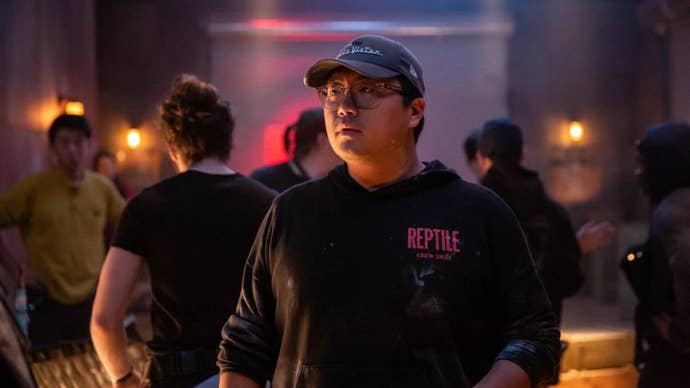
Dickinson, meanwhile, had worked with Kim on another short film prior to Deadweight, and had it pitched to him at a New Year’s party. “I also thought it was crazy, but that's one thing that I absolutely loved about it. I love how crazy this idea is,” the cinematographer, who finally got to put his hours in Fallout 3 to use, says. “I don't know how many tens of hours Nigel and I just talked about the look of it and how we wanted to approach it and even talking about things like how the walls should look or what lights we should put on the wall. It was so much fun.”
While the people he approached liked his idea, as Kim outlines, the wider context of events affecting the industry they were all in also helped create a situation in which the short could come to fruition from a practical perspective. “Ever since we got back from Covid and once [Georgia] as a whole state started shooting again, it got really hectic with the amount of work we were getting. Then, almost immediately with the SAG-AFTRA strike, everything just kind of stopped,” he explains. “I was preparing for Deadweight before the strike, but the project I feel like really only worked because all my friends were free and available.”
Kim made the decision to bankroll the short using his own savings, rather than opting for a solution like crowdfunding - something lots of other fan films and projects of this nature have relied upon. “I didn't want to go through the channels of crowdfunding simply because I didn't want anyone to stop me, or I didn't want anyone to stop me before I even started, but I also didn't want anyone who would be giving me money telling me how to make this,” he says. “I had a very clear idea of what I wanted, in terms of story at least, and I knew that, if all the elements were there, we would be able to make things work.”
Naturally, taking this path, which also allowed the team to focus on making the short as packed with cool references and easter eggs for Fallout fans as they hoped to, came with one big downside, though, as outlined, it’s one that Kim was prepared to accept. “Out of my own pocket, I've spent upwards - I haven’t counted, I honestly don't really want to because I'm a little scared of the numbers - I've definitely spent roughly over $65,000 of my own money on this and I know I'll never see any of it back,” he says, “But what I really wanted to make sure was that every penny was shown on screen and I think I think the short film kind of speaks for itself. Every second of the short, there’s production value.”
“We wanted to make sure that the fans would really enjoy what was put on screen,” Smith adds, picking out the short’s cryo chambers - which were made specially by a fabricator - as just one example. “What I really want to emphasise is that we had a really great group of Atlanta, Georgia talent that loved the idea [and] that put their time and skill into our passion project,” she says. “We had many, many meetings hashing out all the details and also figuring out where funding is going to primarily be put into. Also, feeding the crew well. I can say that our crew, they had plenty of water, plenty of food, and I feel like that is a very vital aspect of making sure people feel good when they're working on a passion project.”
“I think there is a sense [that] there are so many talented people here who grew up in crew on these big budget productions and want to create their own avenues and create their own paths into showing what they can do creatively, and how we can all support each other. That's definitely how I felt when I wanted to show off Nigel, “Dickinson says. “I wanted people to see that Nigel's this very tremendous talent and creative force and just to make sure we hit the right tone, and the feel and that sense of high production value. Because as much as Nigel spent on [the production], you couldn't get this with that budget without just the tremendous amount of heart that everyone put in there.”
Interestingly, Kim says he’s seen the current climate of the industry affect people in different ways, with some following the path outlined by Dickinson. “Everyone's struggling and we're all feeling it,” he says, “So, I feel like I see a lot of my friends either falling out of love with film, or doing the complete 180 and just like, supercharging their career to understand where they want to be.”
Smith outlines that she’s seen the breaks in work due to Covid and the strike be channelled in positive ways by numerous peers, much in the same manner as with Fallout: Deadweight. “Those that are introverted - a lot of my friends are quite introverted - they started writing, they started creating their own art. When you work a lot, like 14-16 hours plus on a day, it's exhausting, you have no creative free will to do anything. You just want to sleep and not move or breathe at all, until your body heals.”

“But,” she continues, “we had so much time on our hands that many of my friends including myself started writing. Creative writing in ways that I feel like we learned about in high school or college, but we never really did it for ourselves. When you have all that time to do something for yourself, you take the chance to see what you can do, and I've seen a great deal of success from all of [that for] my friends that are in various positions, from directors, producers, actors, to even in set decoration and art department. Like, everyone has a story to tell, but what story is it?”
After taking in the positive reception to Deadweight, those who worked on it have been digging into and enjoying Amazon’s Fallout TV show, much like the rest of us. “We've been in an era of really bad video game adaptations,” Kim says. “Hopefully The Last of Us and Fallout just become these two pillars in the video game adaptation era that show people with money - if you really want to do this well, you really have to find the people who care about it.”
If said people want an idea of what good can come out of the kind of passion Kim alludes to, all they have to do is look at Deadweight. With a tight-knit, ambitious group, who were willing to do whatever it took to get the shots they wanted - even, as they told me, if that meant running sprints to get a bottlecap mine to slide into frame the right way or using compressed air cans to emulate the steam coming out of a cryo pod as it opens.
“It was the most fun I've ever had in my entire life, and I'm just so grateful that everyone came together and helped me out on it. It was an awesome experience. The highs and lows of it, I would do it all over again right now.”
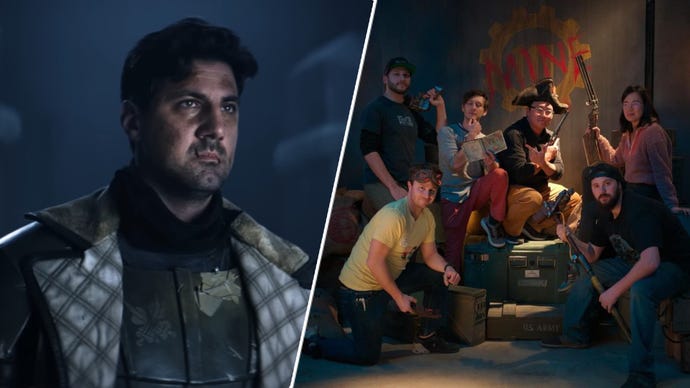


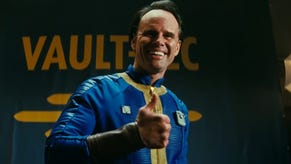
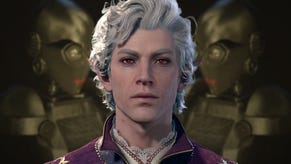
.png?width=291&height=164&fit=crop&quality=80&format=jpg&auto=webp)
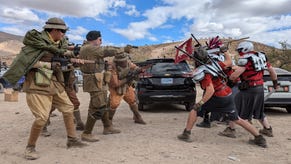
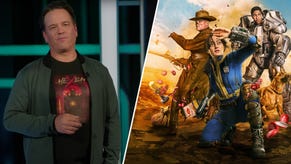
.jpg?width=291&height=164&fit=crop&quality=80&format=jpg&auto=webp)
